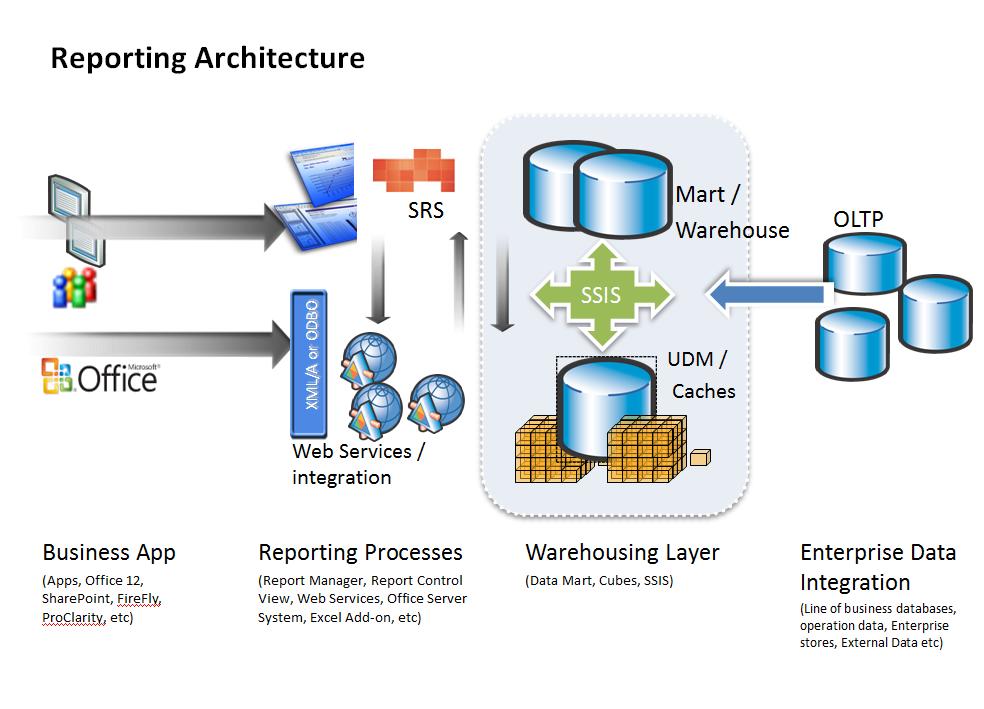A Typical Enterprise Reporting Architecture
The most typical implementation of Enterprise Reporting architecture includes the following four tiers:
Client Tier – Business front-end application and technologies. Web Browser is the most typically UI interface for today’s enterprise and it is supported richly with SQL 2005 Reporting Service. Other client tier technologies might include custom applications, Office (Excel/Assess), SharePoint web portal and even advanced BI apps like ProClarity.
Processing Tier – This is the core tier of SQL 2005 Report Server, mostly with direct installation of the Reporting Service, Report Manager, Web Services etc. All of them are standard features from SQL 2005 Product packages.
Data Tier – The central place of enterprise’s data store and warehouse. Enterprises might choose to just use data stores, marts or warehouse or build out OLAP type BI Cubes for more sophisticated multi-dimensional data consumptions.
Integration Tier – Business Integration is one of today’s most critical capabilities for enterprise. More or less the Integration involves data sending and receiving. For Enterprise Reporting, this is the area where internal or external data and/or information are come together for connected wider enterprises.

This is a conceptual high level architecture and has not yet taken into accounts other architectural capabilities. This is just to demostrate the 4-tier architectural design of Enterprise Reporting.